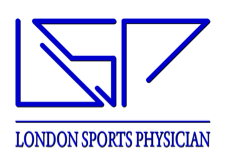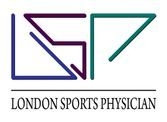Prolotherapy Injections
BACKGROUND ON PROLOTHERAPY
(EXTRACT REPRODUCED FROM FORMER BIMM WEBSITE)
Sclerosant Injections to Ligaments
Ligaments help to provide stability in the joints. They prevent the joint from moving more than the ‘normal’ range (though what is ‘normal’ varies from one individual to another). Some people have lax ligaments that allow more than ‘normal’ movement – often spoken of as ‘double jointed’.
In the spine there is a complex arrangement of ligaments, both between each vertebral segment and between the spine and pelvis, which allows flexibility in some directions and produces restraint in others.
Sometimes ligaments can be overstretched, or even torn (as in a sprained ankle). The ligament may then not control the joint adequately – thus leading to ‘instability’ which may put abnormal stresses on the joints and discs in the spine.
In women, the pelvic joints need to be supple for child bearing, and so the ligaments soften and stretch more readily. Sometimes they do not tighten up after childbirth and therefore allow too much movement – hence ‘sacroiliac instability’.
Prolotherapy works by stimulating the body to make new fibres, which are laid down within the substance of the ligaments, thickening and strengthening them. The solution: phenol 2%, dextrose 30%, glycerol 30% is mixed with local anaesthetic, and a small amount (half a cc) is injected into each end of the ligament, close to its attachment to the bone.
This initially provokes inflammation, attracting the cells that make collagen fibre to the area. Over the ensuing weeks, the fibre is incorporated into the existing ligament.
Each ligament has to be stimulated 3 or 4 times (sometimes up to 6), at intervals of a week, in order to produce sound fibrous development. Hence the injections are given as a course of treatment.
The solution used for the injection is used in other treatment, such as varicose veins, so it is known to be safe. However, because prolotherapy for ligaments is not widely practised, it has not as yet been licensed for this particular type of treatment. Because the organic compounds in the solution are rapidly disposed of by the body, it is safe to have a repeat course of treatment – should it be necessary.
Prolotherapy does NOT create scar tissue but healthy collagen fibres in the lax ligaments.
Injections are commonly given in the lumbar region, sacroiliac region, thoracic and cervical spine. They are also useful in the ankle and shoulder region.
When receiving these injections, ENTONOX analgesia may be offered (Nitrous oxide and oxygen, as used in labour) to relieve the discomfort of the injection. Intra-venous sedation is also available for those who prefer it. This produces a relaxed and sleepy state. With sedation, arrangement for transport home will be necessary.
Points to note:
These injections do cause some aching and stiffness for two to three days. Rest is not necessary; normal activities should be continued. Paracetamol, rather than aspirin or Nurofen, can be taken for pain relief.
Complications are very rare since the injection is not placed into the spinal canal or near spinal nerves. (Infection occurs in 1 in 17,000 cases, this being the main complication).
The benefit is not immediate but gradual. It becomes noticeable after 6-8 weeks, increasing up to twelve weeks.
If there are any further questions or uncertainties please ask the doctor.’
Administrative matters:
- For clarity, please be advised that not all private health insurance companies will cover these procedures.
- You are advised to check with them before committing to having these injections done.
- If that is the case, you will need to make provision to fund these injections yourself.


